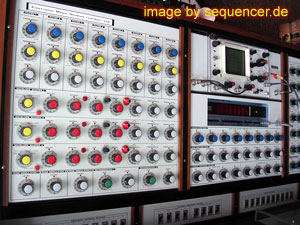

This new version of LED Grove consists of one green LED. The button signals the SIG(D1) wire,NC(D2) is not used on this Grove. This new version of button Grove contains one independent button, which are configured with pull-down resistor – ready for use with our microcontrollers as digital input. Next, let's examine each of our “Grove units”, and then use each on in an example Arduino sketch that we can use with our Seeeduino boards. The same format also supports I2C (IIC) signalling, and several of the Grove Base shield connectors are tied to Analog pins 4 and 5 to support it for future I2C-based Grove units. The connector leads are Ground, Vcc, D2, and D1, where the D1 and D2 leads may be digital or analog input or output, depending on the equipment on the Grove units. Make sure you know the silkscreen of each socket before you start wiring.Įach "Grove" is a peripheral board that connects to the Grove System "Grove" shield using a consistent 4-wire connectorised cable. It is the same as the Analog I/O sockets. Or, if two Grove units only use one digital pin, such as the tilt switch and the piezo, they can sit together on the Grove Base board as they only use one of the digital lines in the connecting wire and therefore will not interfere with each other. Wires for two signal Grove units cannot sit side-by-side on the Grove Base board because one pin (such as D2) will be multi-using. If you are going to use an input Grove units and an output Grove which have two signal pins simultaneously (now the starter Kit v1.0b doesn't have two signal pins Grove), separate your wires so that a socket is between them as such: When using the digital I/O, note the staggered alignment of the pins – that is, one socket handles D1 and D2, the next D2 and D3, and so on. Each socket contains 5V, GND, and two I/O pin connections: There is one small thing to take note of when connecting to analog or digital sockets. The labels on the "Power" header pins may be confusing - the new Arduino Uno has two ground pins between the Vin and 5v, and label "GND" twice, but the Grove labels match the Duemilanove which label "GND" once, wider, to indicate both pins.

For a more detailed examination of the Grove, please consider the following diagram:įor those working with Seeduino or Arduino boards, the layout should be quite familiar. Each socket is clearly labelled with its matching I/O pin. The purpose of the Grove base shield is to allow easy connection of any microprocessor input and output pins to the Grive units. In v1.0b, we move the analog connectors inward a little so that it will fit the higher power connector and USB connector. The Grove is very similar in fashion to an Arduino shield board, and in fact is used as such with our Seeeduino or Mega board.

We have many kinds of converter cables(still increasing) to deal with backwards-compatibility. Still, you need not worry about compatibility between the Grove Grove Shield and your existing Electronic Bricks. We build all kinds of Grove units to match up with Grove Base Board. The 4-pin buckled connectors also make the wiring situation more stable. We standardize all the connectors into 4 pins(Signal 1,Signal 2,VCC and GND) 2mm connectors, which simplify the wiring of electronics projects. Grove Base board is the new version of Electronic Brick Shield.The Grove base Shield is compatible with Seeeduino v2.21 (168p and 328p), and Arduino UNO and Duemilanove. Now let's look at each component in more detail.įirst we start with the Grove base shield board. Ten pre-formed connecting wires to bridge Grove units to the Grove Base board (not shown).Nine Grove “Grove units”, consisting of:.One Grove Base board – this allows you to connect various “Grove Units” (below) to your Seeeduino board.The Grove Starter Kit v1.1b consists of the following items, as pictured below: Solder the second I2C in the Base Shield.Dump the unnecessary edge mounting of the Grove - Protoshield.The Grove system is a modular, safe and easy to use group of items that allow you to minimise the effort required to get started with microcontroller-based experimentation and learning.Īlthough there are many choices available for microcontroller development environments, the Grove system will work very well with the Arduino system.


 0 kommentar(er)
0 kommentar(er)
